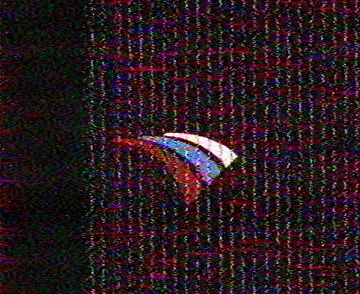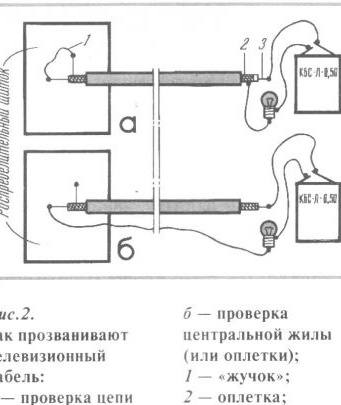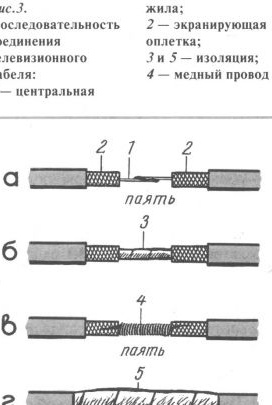
From our collective television antenna, some ardent opponents of television are constantly stealing some kind of expensive amplifier. Recently he was again stolen, grabbing at the same time half a kilometer of cable.
For a month I had to run around the room with a room antenna, like a chicken with an egg, looking for a place where to install the antenna so that it would not snow on the screen, but something would be acceptable for perception. But the “ever-vanishing” amplifier was put in place, and the TV owners had another happy respite. True, my happiness was incomplete. The fact is that the “RTR” channel began to receive my television perfectly, but on the “ORT” channel, it was still snowing. The called master came, poked somewhere with the ends of the wires of some device and categorically declared: "There is a break in your room wiring, I will not look for it, change the cable." And he left, slamming the door, and did not even listen to me.
Although he asked well why the “RTR” channel shows well, he answered that a piece of ordinary wire is enough for this channel. Having taken offense at the master, I was so angry that I myself began to emit some kind of television waves, because I noticed how the snowfall on the screen of the box intensified and a howl of wind was heard from the TV.
Then, having calmed down, he began to calculate what the advice of the master would cost me. So, 20 m of cable for 2500 rubles per 1 m - wow amount! But I didn’t touch the cable, I didn’t hammer nails into the wall for a long time, I did not drill anything. Where does the cliff come from if the cable is laid on the baseboard, covered, painted over and glued with wallpaper. And yet, before changing the cable, I decided to check it. In the distribution panel on the landing, with a bug from a piece of copper wire, I closed the central core and the shielding cable sheath, and at the output at the plug I connected a 2.6 V light bulb and a flashlight from the flashlight (fig. .2, a). Closed the chain - bam! And past! The light did not come on. The master turned out to be right.
Confident that the central wire burst, checked it - the light is on. The shielding braid rang - the light is off (Fig. 2, b). I didn’t expect a break in it! He began to look for a cliff and found it just under the first bracket securing the cable to the baseboard. Everything is logical. After all, the cable section from the plug to the baseboard constantly dangles like a dog’s tail. Either the master trembles, then the master. So the braid of constant excesses in the place of the bracket could not stand it. I did not change the cable, but bought a two-meter piece of it to replace the cut part with it. Spliced the cable (Fig. 3). I did it like that.He twisted the ends of the central cores, disappeared the junction, after which he insulated the exposed part of the central core with a synthetic film. Then a copper wire was soldered to one end of the shielding braid, wound it with a spiral on the insulation of the central core and soldered the end of the wire to the other end of the braid.
After that, the ORT channel returned to the screen.


